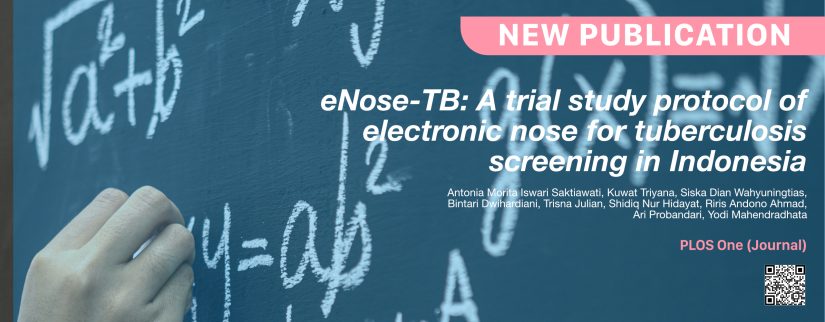
Antonia Morita Iswari Saktiawati, Kuwat Triyana, Siska Dian Wahyuningtias, Bintari Dwihardiani, Trisna Julian, Shidiq Nur Hidayat, Riris Andono Ahmad, Ari Probandari, Yodi Mahendradhata
https://doi.org/10.1371/journal.pone.0249689
Journal : PLOS One
Abstract
Even though conceptually, Tuberculosis (TB) is almost always curable, it is currently the world’s leading infectious killer. Patients with pulmonary TB are the source of transmission. Approximately 23% of the world’s population is believed to be latently infected with TB bacteria, and 5–15% of them will progress at any point in time to develop the disease. There was a global diagnostic gap of 2.9 million between notifications of new cases and the estimated number of incident cases, and Indonesia carries the third-highest of this gap. Therefore, screening TB among the community is of great importance to prevent further transmission and infection. The electronic nose for screening TB (eNose-TB) project is initiated in Yogyakarta, Indonesia, to screen TB by breath test with an electronic-nose that is easy-to-use, point-of-care, does not expose patients to radiation, and can be produced at low cost.
The objectives of the two-phase planned project are to: 1) investigate the potential of an eNose-TB as a screening tool in Indonesia, in comparison with screening with clinical symptoms and chest radiology, which are currently used as a standard, and 2) analyze the time and cost of a screening algorithm with eNose-TB to obtain additional case detection. A cross-sectional study will be conducted in the first phase to validate the eNose-TB. The validation phase will involve 395 presumptive TB patients in the Surakarta General Hospital, Central Java. In the second phase, a cross-sectional research will be conducted, involving 1,383 adults and children in the municipality of Yogyakarta and Kulon Progo district of Yogyakarta Province.
The findings will provide data concerning the sensitivity and specificity of the eNose-TB as a screening tool for tuberculosis, and the time and cost analysis of a screening algorithm with the eNose.
